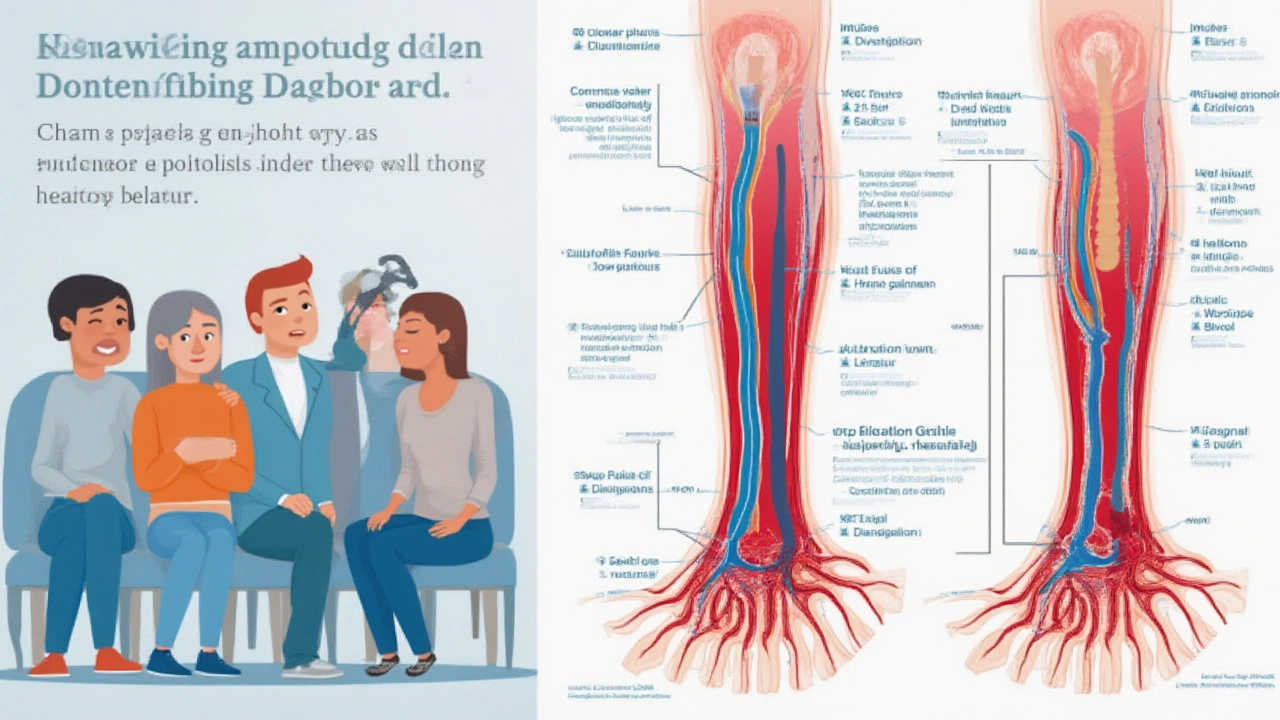Blood Clots: What They Are, Why They Form, and How to Protect Yourself
Ever wondered why a tiny piece of blood can turn into a dangerous blockage? A blood clot is simply a clump of platelets and proteins that forms to stop bleeding. Most of the time it’s helpful – it’s what saves you when you get a cut. The problem starts when clots form inside a vein or artery without an injury. That’s when they can block blood flow and cause serious health issues.
How Blood Clots Form and Common Types
Clots begin when blood vessels get damaged or when the blood becomes too sticky. Anything that slows blood flow, irritates vessel walls, or changes blood chemistry can trigger the process. The most common types you’ll hear about are deep‑vein thrombosis (DVT) and pulmonary embolism (PE). DVT usually shows up in the legs; you might feel swelling, pain, or a warm feeling. If a piece of that clot breaks off and travels to the lungs, it becomes a PE, which can cause sudden shortness of breath, chest pain, or coughing up blood.
Arterial clots are a bit different. They form in arteries that carry oxygen‑rich blood and often lead to heart attacks or strokes. Symptoms are abrupt – a crushing chest pain for a heart attack or a sudden facial weakness for a stroke. Recognizing these signs fast can save lives, so knowing the basics helps you act quickly.
Practical Ways to Reduce Your Clot Risk
Most clot risk factors are within your control. Staying active is key – long trips, desk jobs, or couch‑marathon sessions let blood pool in the legs. Take short walks, stretch, or do calf raises every hour if you’re sitting for long periods. Maintaining a healthy weight also lowers the pressure on your veins and reduces inflammation that can make blood stickier.
Hydration matters, too. Dehydrated blood thickens, so drink enough water, especially in hot weather or after exercise. If you smoke, quit. Nicotine narrows blood vessels and makes clots more likely. Limit alcohol, because excessive drinking can raise certain clot‑forming proteins.
Medical conditions like diabetes, high blood pressure, or high cholesterol increase clot risk, so keep those under control with the help of your doctor. Some people need prescription blood thinners after surgery or during pregnancy – never skip those doses and always follow the guidance on diet interactions.
If you’ve had a clot before, you’re at higher risk for another one. Keep an eye on any new swelling or pain and report it promptly. Regular check‑ups, especially if you’re on medication, ensure your blood’s thickness stays in the safe range.
Finally, know the warning signs. Sudden leg pain, swelling, or redness could be DVT. Unexplained shortness of breath, chest pain that worsens when you breathe, or coughing up blood could signal a PE. Chest pressure, sudden weakness on one side, or trouble speaking point to a stroke. If any of these appear, call emergency services right away.Understanding how clots form, spotting the symptoms, and taking everyday steps to stay active and healthy give you a solid defense. Blood clots are serious, but with the right habits and quick action, you can lower the odds and protect yourself and your loved ones.
-
Chronic Venous Insufficiency & Embolism: What Really Connects Them?
Explore how embolism and chronic venous insufficiency connect, risk factors, stats, symptoms, and actionable steps to keep your veins healthy for life.
